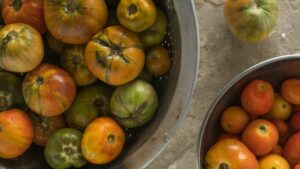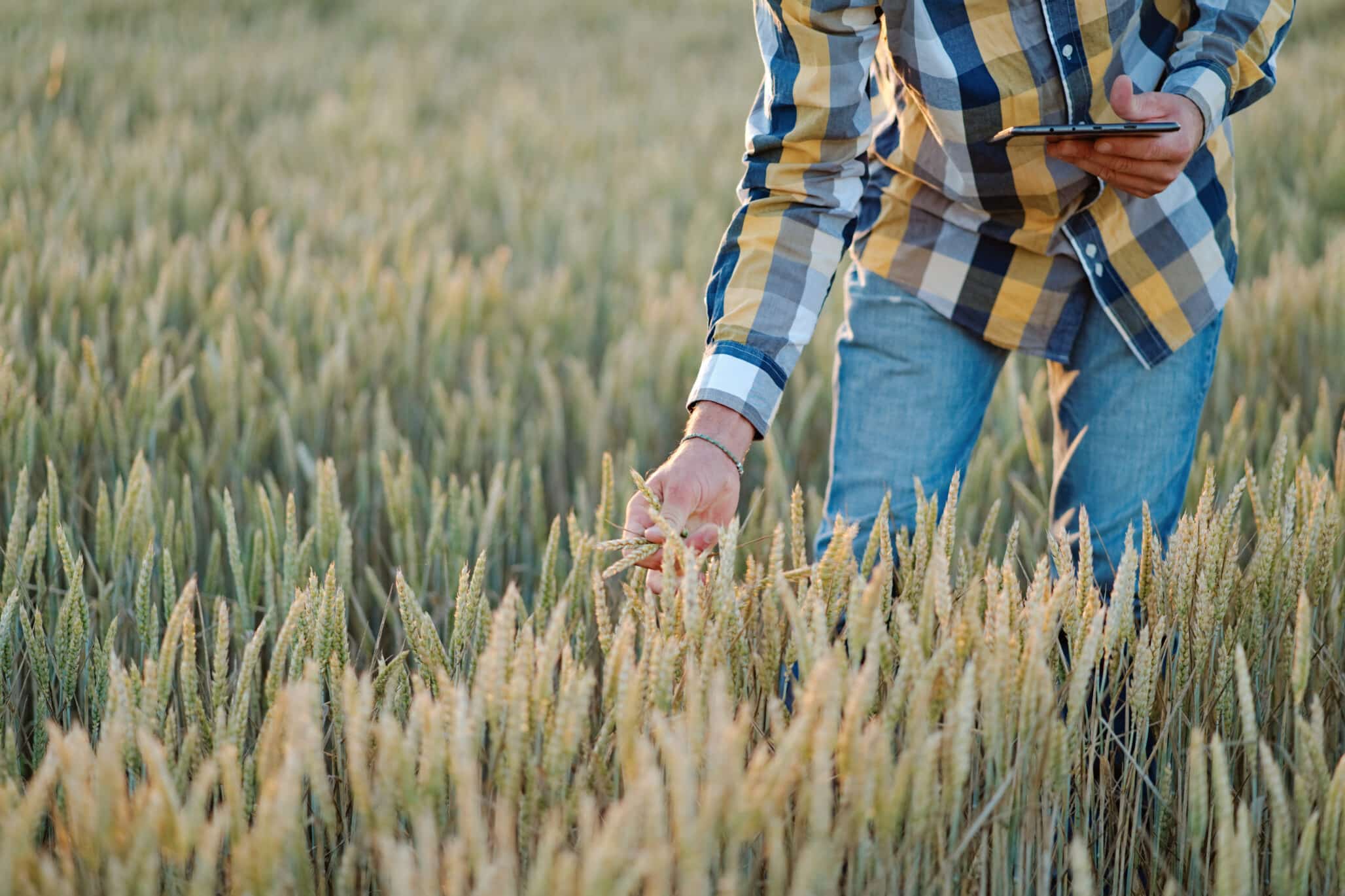What is the best way forward in the EU on the Tomato Brown Rugose Fruit Virus (ToBRFV)?
WHY IT MATTERS: Over the past few years, the Tomato Brown Rugose Fruit Virus (ToBRFV) has been making headlines, forcing regulators in various countries to act. As is more often the case, the different national and regional regulations are not aligned, causing trade disruptions. European Seed dove into the matter, reaching out to two seed sector experts for their take on this disease and the corresponding regulations.
Claudius Marondedze is technical manager plant health and seed trade at Euroseeds; and Marleen Maassen is chair of the ad hoc Euroseeds WG ToBRFV and regulatory manager seed movement EMEA at Bayer Crop Science. They provided the following combined responses:
European Seed (ES): What is the situation with the current regulation around ToBRFV?
ToBRFV continues to be a topic of concern for the agricultural sector. Since the first outbreak of ToBRFV in tomato Southern Israel in 2014 and on tomato plants grown in greenhouses in Jordan in 20151, the virus has spread to many other countries including some in Europe and Asia, as well as to the U.S. The impact of the virus in terms of yield loss in tomato production has prompted various countries to regulate it. The European and Mediterranean Plant Protection Organization (EPPO) performed a Pest Risk Analysis (PRA) on ToBRFV and recommended it for regulation as a quarantine pest in 2019. Since then, it has been regulated under an Emergency Measure for the European Union (EU, Emergency Measures, Commission Implementing Regulation (EU) 2019/1615 of 26/09/2019) and other EPPO member countries such as Morocco and Türkiye in 2019. The regulations target two crops, Solanum lycopersicum (tomato) and Capsicum spp (pepper). Other countries that import and export tomato and pepper seeds to and from the EU followed suit. Currently, ToBRFV is regulated as a quarantine pest under emergency measures in Algeria, Argentina, Australia, Azerbaijan, Belarus, Chile, China, Costa Rica, EU, Guatemala, Japan, Kazakhstan, Kenya, Kyrgyzstan, Lebanon, Mexico, Morocco, New Zealand, Russian Federation, Saudi Arabia, Serbia, the Seychelles, South Africa, South Korea, Taiwan, Thailand, Türkiye, United Kingdom, United States of America and Uzbekistan. Except for the Seychelles, all other countries that named it a regulated pest targeted seeds for sowing for tomato and capsicum seeds. The Seycelles’ restrictions are limited to the importation of fresh tomatoes containing ToBRFV.

The various measures request different inspections or tests to be carried out both prior to export and often upon arrival as well. The testing method is often by means of real time Polymerase Chain Reaction (RT-PCR), with some National Plant Protection Organizations (NPPOs) strictly specifying sample size to be tested. Overall analysis highlights up to 18 different combinations of phytosanitary requirements that may need to be declared for seed to reach its target market.
As ToBRFV has mostly been regulated via emergency measures to date, the regulations have been implemented with limited input from trading partners and the seed sector. This led to differences in the interpretation of measures at implementation, triggering trade disruptions mainly due to delays caused by verification testing at import. In the case of seeds for sowing, these delays at import can have a negative impact on seed quality, including germination. Additionally, supply delays have been caused by the blocking of seed lots during investigations by NPPOs for the source of infestations at grower level.
ES: For Europe, what are the downsides of the Emergency Pest approach?
Emergency measures can be a necessary regulatory instrument to effectively address an emerging, urgent or critical situation. However, they can also come with challenges, including (but not limited to):
- limited stakeholder consultation or input, which can have significant consequences when it comes to the feasibility of implementing the measures, with disproportionate impact on activities related to breeding for resistant tomato and pepper varieties. Since emergency measures are implemented quickly to respond to a given threat, there is limited time to consult relevant stakeholders across the seed sector for input. Nevertheless, when amending such measures, this stakeholder consultation should be considered. The downside of missing the input from key stakeholders is the exclusion of valuable perspectives which could help in reducing unintended consequences and ensuring the continued availability of high-quality seed to the growers.
- ongoing limitations of scientific data available to define evidence-based and proper risk mitigation measures.
iii. the creation of uncertainty on the impacted sector and unpredictability of events to follow including additional declaration requirements, trade relations with third countries, supply chain planning and investment decisions.
- i the creation of challenges for predictable seed movement that slow research and innovation on the development of resistant varieties.
ES: What is the impact of a ToBRFV eradication approach to tomato production in the EU and globally?
The impact of a ToBRFV eradication approach can be challenging. Implementing the destruction procedure on infected plants causes reduced total yields, and in severe cases a complete loss of production. The latter also carries environmental implications including waste management challenges.

The eradication approach also implies, at least in the EU, that NPPOs have to investigate the source of any occurring infestation within their Member State. Such investigations cost time and resources with very few of these investigations pinpointing a source of contamination. Seed lots are blocked during the investigations, causing delays in the supply chain that can impact tomato production. Meanwhile, and unfortunately, eradication has proven to be unachievable based on re-infection rates at contaminated sites as well as the global spread the virus has already made.
In addition, a ToBRFV eradication approach — at least the version seen today — impacts trade of tomato and pepper worldwide when importing countries impose restrictions on regions affected by ToBRFV. This distracts international trade and restricts market access for growers.
Nevertheless, the impact of ToBRFV has triggered research and innovation towards creating resistant varieties and improved disease control and management.
ES: What tools does the seed sector have to mitigate the risk of ToBRFV on seed production sites?
The seed sector always applies a multilayer system of tools rather than one tool to ensure healthy and high-quality seeds for the growers. One key tool is strict hygiene measures from production to processing and to the farm gate and testing at different stages in the process. It is good to note that even without the emergency measures or regulations put in place, the seed sector is taking all the necessary preventive measures and testing thoroughly to ensure the supply of healthy seed for growers. Further, the breeding sector has been busy with research to identify resistant traits and incorporate them into commercial varieties. This is an ongoing process, but right now genetic resistance has already been established in some lines with some resistant varieties already on the market.
ES: What regulatory changes would be best to help the EU seed trade move forward?
In managing ToBRFV, the seed sector and regulators share a common goal. We are committed to supplying healthy seed to our customers around the world. Given the current developments on the spread of ToBRFV in Europe in particular, it is recommended that ToBRFV be reclassified as a Regulated Non-Quarantine Pest (RNQP). A Regulated Non-Quarantine Pest is a pest that is already present in the EU territory, but its presence has an unacceptable economic impact and therefore is regulated to avoid further spread. This follows recommendations by some NPPOs based on research conducted by specialists of authorities or institutes in four EU Member States that demonstrates ToBRFV qualifies as RNQP in the EU2. This information was also published on the EPPO website3. According to their assessment, ToBRFV does not qualify scientifically as a Quarantine Pest for the EU as supported and defined in the Plant Health Regulation (EU) 2016/2031 article 4 resp. article 3(b), nor for an emergency measure for the same reason (article 30(1)) and should be considered a RNQP. This would mean that ToBRFV is still regulated and measures would remain in place, but the focus would be on mitigation rather than eradication, moving away from repetitive testing at import and demanding investigations of infestations within the Member State.
ES: Are there ways in which the outbreaks of new (similar) viruses can be prevented?
First of all, it is important to keep in mind that viruses such as ToBRFV are very difficult to keep from spreading as there is so much movement globally of fruits, plants, seeds, transporting material and people, all of which can contribute and make eradication very difficult to achieve. Having said that, taking an analogy from human health, will we as society and individuals do anything different if another virus like COVID-19 emerges? We think yes, as we are more prepared based on our experiences from the global pandemic and more alert to emerging threats. The seed sector enshrines the importance of preventive hygiene measures and progressively underlines its importance in addition to seed health tests that are carried out to ensure that clean, high-quality seed is delivered to the growers.
We know that prevention is better than cure, and our seed production practices reflect this truth. Working together as seed sector and engaging with policy makers is also an important strategy to find practical and effective solutions to prevent the spread of seed-transmitted diseases. Continued open dialogue — not only when a new disease emerges but ongoing — between the sector and policy makers will ensure that newly occurring risks are effectively dealt with as they arise, and in a manner that is science-based and workable for the seed sector. This approach will not only minimize downstream consequences and seed supply disruptions to the food sector, but it will also acknowledge all the good work and preventive measures the sector already invests on a daily basis.
Footnote 1: Salem N, Mansour A, Ciuffo M, Falk BW & Turina M (2016) A new tobamovirus infecting tomato crops in Jordan. Archives of Virology 161(2), 503–506
Footnote 2: Van der Gaag D, Botermans M, Ntoulmperis L, Tomassoli L, Guitian J, 2021. Tomato brown rugose fruit virus (ToBRFV) – pest status in the EU, likelihood of eradication and evaluation against RNQP-criteria. Available online: https://english.nvwa.nl/documents/plant/plant-health/pest-risk-analysis/documents/tomato-brown-rugose-fruit-virus-tobrfv
Footnote 3: https://pra.eppo.int/pra/1e0cadd4-bc68-4871-b56c-7cd9f24a382d












